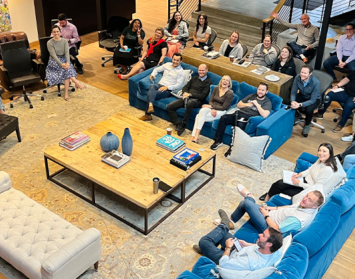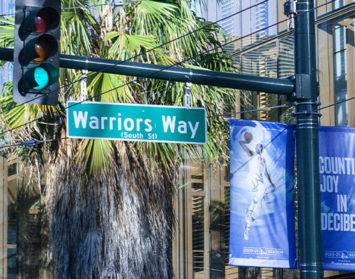There’s been a lot of hoopla in recent months about Downtown San Diego reinventing itself to become some sort of high-technology center. The Downtown San Diego Partnership and Center City Development Corp. have teamed together to inculcate into the minds of industry and the masses in general the notion that downtown can and even should become “Bandwidth Bay.” The proponents argue that if San Diego is to become a high-tech mecca in future years, it will have to be based, of all places, in downtown San Diego.
Let me get right to the point of this column. It is a bonehead idea, nothing short of patent nonsense.
Nobody believes more than I do that San Diego is and is destined to become even more of a major, world-class technology center. We’ve already come a long way to earn that status. In case the downtown-only proponents don’t realize it, there’s more to San Diego than its downtown. Sorrento Mesa, the UTC area, the Interstate 15 corridor and other regional venues are teeming with telecommunications and other technology companies. “Telecom Beach,” “Wireless Valley,” are but two of several slogan-like names that people who have too much time on their hands have tried to foist on the Sorrento Mesa area. Come hell or high water, they’re trying to do everything they can think to do to find a name that clicks like Silicon Valley.
Bandwidth Bay ain’t it. Neither the name nor idea makes any sense. Here’s an as-yet mythical but highly likely conversation that will no doubt take place if this buffoonish idea ever takes form.
“Where are you located?” asks one high-tech entrepreneur of another.
“Bandwidth Bay.”
“Huh? Where on earth is that?”
“Downtown San Diego,” comes the answer.
“Why didn’t you say so in the first place?”
Folks, downtown already has a name that is well over 220 years old: San Diego. It’s a safe bet that people in high-technology businesses know the name.
More important than the fact the name is idiotic, downtown San Diego already has a full plate in terms of what it is and is destined to become. Downtown has been and will continue to be the civic, cultural and business center of the region. It already is the headquarters for most of the region’s law and accounting firms, several major companies and is the center stage for much of the area’s convention and tourism business.
At that, there’s not enough office space for what we already have. But downtown’s growing nonetheless. There are currently more than 8,000 for-sale and rental units under construction or planned. We’ve just doubled the size of the Convention Center. The stalled construction of a major league ballpark is likely to resume in the next few months. And now, these downtown promoters want to try to squeeze a whole new industry into an already crowded area? Somebody’s drinking some really bad Scotch.
We’re already stretching the traditional definition of downtown San Diego to include recreation and housing for thousands of new residents who two years ago would never have dreamed of wanting to live downtown. Every sector — recreational, convention/tourism and residential — has grown dramatically in the downtown area except the business sector.
Current and prospective office tenants — those who want or need to do the area’s traditional business — are battling the 3 percent vacancy rate and skyrocketing leasing and parking rates prevalent in downtown’s office buildings. We can’t build enough Class A office space to handle the low-tech traditional downtown business tenants.
One of the chief arguments for advancing downtown as a technology center is the fact that the entire area is wired for fiber optics. OK, but that’s not that big of a deal, considering the availability of that feature elsewhere in the region. It’s like saying the area makes sense because it has electricity. Any location for high-technology companies will have to have that infrastructure in place for high-speed access.
Instead of hiring staff to obligingly chant the Bandwidth Bay mantra, why doesn’t the Downtown Partnership and CCDC work with EDC to increase tenant capacity in the downtown area? We need office space badly. It takes at least three years for a building to come online. What few buildings now in the works will quickly fill up as a result of no new buildings having been constructed in the past decade. If CCDC would guarantee or subsidize financing, we could get buildings built when they’re needed — not later when rates have skyrocketed and tenants need to move elsewhere.
Downtown has been and will continue to be dominated by government, lawyers and other service-sector employers. Additional recreation, tourism and housing will fill the area even more so. There is no reason or room for trying to house high technology companies who could and should locate to other venues within our region.
Just as the ultimate solution to the electricity and natural gas crisis is additional generating capacity, we likewise need to increase the capacity to house the growth we already have in downtown’s traditional office users. We don’t need to spend time, money and newspaper column inches trying to make downtown San Diego anything more than what it already is: the heart of “America’s Finest City.”
Jason Hughes is founder of Hughes Marino, an award-winning commercial real estate company with offices across the nation. A pioneer in the field of tenant representation, Jason has exclusively represented tenants and buyers for more than 30 years. Contact Jason at 1-844-662-6635 or jason@hughesmarino.com to learn more.









